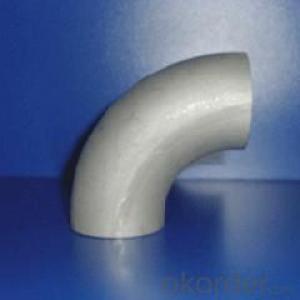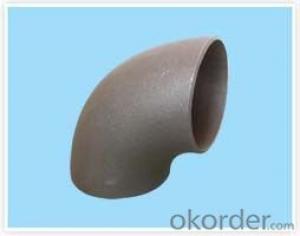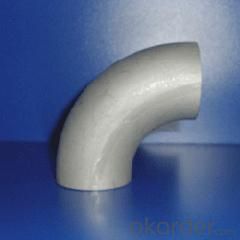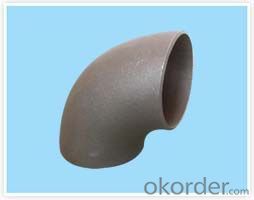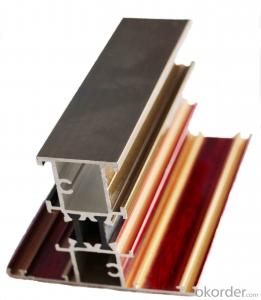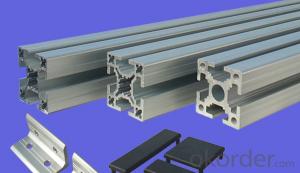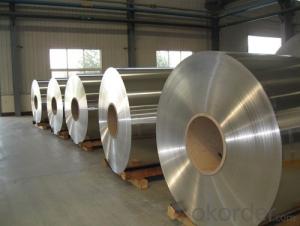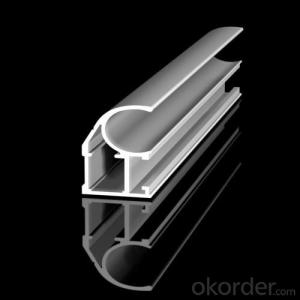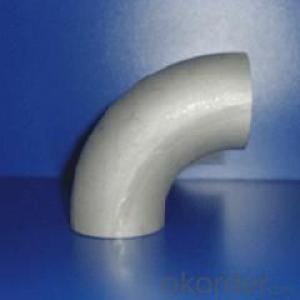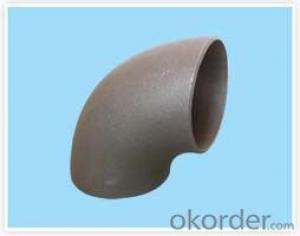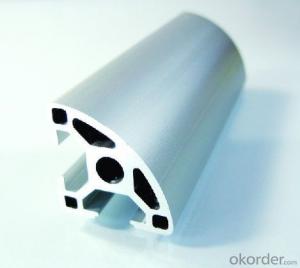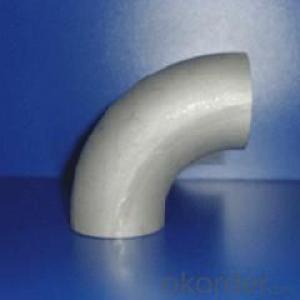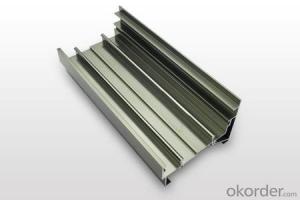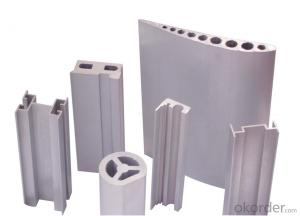T-Slot Aluminum Profiles 45 Degree Aluminum Elbow Profile
- Loading Port:
- China Main Port
- Payment Terms:
- TT OR LC
- Min Order Qty:
- -
- Supply Capability:
- -
OKorder Service Pledge
OKorder Financial Service
You Might Also Like
Specifications
45 degree aluminum elbow
1.size:1/2"-48"
2.standard:ASTM B16.9
3.Certification: ISO
Type | 45 degree elbow |
Size | 1/2"-48"DN15--DN1200 |
Wall Thickness | Sch5--Sch160XXS |
Standard | ISO, SNSI, JIS, DIN, GB/T12459GB/T13401ASME B16.9SH3408 SH3409HG/T21635HG/T21631SY/T05010 |
Material | 20#/Q235 |
Packaging | wooden cases or wooden pallet or as per customers requirement |
Applications Range | petroleum, chemical, power, gas, metallurgy, shipbuilding, construction, etc |
Min Order Quantity | According to customer's requirement |
Delivery Time | According to customer's requirement |
Quality | First grade |
Productivity | 8000000T/Y |
Others | 1.Special design available according to requirement 2.Anti-corrosion and high-temperature resistant with black painting 3. All the production process are made under the ISO9001:2008 strictly. |
- Q: Can aluminum profiles be used in the production of agricultural equipment?
- Yes, aluminum profiles can be used in the production of agricultural equipment. Aluminum is a versatile and lightweight material that offers several advantages for agricultural applications. It is corrosion-resistant, which is essential for equipment exposed to outdoor conditions and various chemicals used in farming. Additionally, aluminum profiles can be easily shaped and customized to fit specific design requirements, allowing for the creation of complex and functional agricultural equipment. The lightweight nature of aluminum also makes it easier to transport and handle the equipment, reducing labor costs. Moreover, aluminum profiles are recyclable, making them an environmentally friendly choice for agricultural equipment production. Overall, utilizing aluminum profiles in agricultural equipment can enhance durability, efficiency, and sustainability in the farming industry.
- Q: Can aluminum profiles be used in electrical panel manufacturing?
- Yes, aluminum profiles can be used in electrical panel manufacturing. Aluminum is a lightweight and durable material that offers excellent electrical conductivity, making it suitable for use in electrical panels. It also has good heat dissipation properties, which is important for preventing overheating in electrical systems. Aluminum profiles can be easily fabricated and customized to meet the specific requirements of electrical panel designs. Additionally, aluminum is resistant to corrosion, which ensures the longevity of the electrical panel. Overall, aluminum profiles are a popular choice in electrical panel manufacturing due to their numerous benefits.
- Q: 3030 aluminum profiles, can be used in outdoor snow exposure environment?
- European standard 3030 series has a variety of specifications, such as Jing Teng aluminum European standard 3030R, referring to the European standard 3030 fan, 3030G refers to the 3030 GB profiles.
- Q: How strong are aluminum profiles?
- Known for their strength and durability, aluminum profiles are highly regarded in various applications. With a high strength-to-weight ratio, they prove to be excellent choices. The strength of aluminum profiles may vary based on factors like the alloy used, tempering process, and profile design. Typically, they can withstand substantial loads and pressures, making them suitable for a wide array of structural and industrial purposes. Moreover, their exceptional resistance to corrosion further bolsters their strength and longevity. All in all, aluminum profiles are widely recognized as robust and dependable materials, delivering outstanding performance across different applications.
- Q: This question asks for an explanation of the manufacturing process of aluminum profiles.
- <p>Aluminum profiles are made through a series of processes starting with the selection of high-quality aluminum ingots. These ingots are melted in a furnace and then extruded through a die to create the desired profile shape. The extrusion process involves forcing the molten aluminum through a shaped opening in the die, which gives the aluminum its final form. After extrusion, the profiles are cooled, straightened, and cut to length. They may then undergo secondary processes such as anodizing, powder coating, or painting for enhanced durability and appearance. Finally, the profiles are inspected for quality and packed for distribution.</p>
- Q: This question asks about the various types of aluminum profiles that are utilized for the purpose of exterior wall cladding.
- <p>Aluminum profiles for exterior wall cladding come in various types, each serving specific design and structural needs. Common types include: 1. Flat Profiles, which are simple and versatile for basic cladding. 2. Box Profiles, offering a sleek, modern look and are often used for commercial buildings. 3. L-Profiles, used for corner sections and providing structural support. 4. U-Channels, which are used for concealing fasteners and creating a clean appearance. 5. Angle Profiles, used for creating corners and edges. 6. Special Profiles, designed for specific architectural features. Each type is chosen based on the aesthetic, structural integrity, and weather resistance required for the project.</p>
- Q: How do aluminum profiles compare to other materials used for construction and manufacturing?
- Construction and manufacturing can benefit greatly from the use of aluminum profiles due to their numerous advantages. Firstly, the lightweight nature of aluminum makes it more manageable and cost-effective in terms of handling and transportation. This can lead to significant savings during the construction or manufacturing processes. Moreover, the corrosion-resistant properties of aluminum profiles make them perfect for outdoor applications and environments with elevated moisture levels. Their durability also means that they have a longer lifespan compared to materials like wood or steel, resulting in reduced maintenance and replacement needs. In addition to their practical benefits, aluminum profiles offer great versatility in terms of design and customization. They can be easily shaped and molded into various forms and sizes, enabling greater flexibility in architectural or manufacturing designs. Furthermore, aluminum profiles can be effortlessly joined together using different methods such as welding or mechanical fastening, facilitating efficient assembly and construction processes. From a sustainability standpoint, aluminum is an incredibly recyclable material, and aluminum profiles can be recycled without any loss in quality or strength. This makes them an environmentally-friendly option as they contribute to waste reduction and energy conservation. However, it is important to acknowledge that aluminum profiles may have certain limitations compared to other materials. For instance, aluminum is not as strong as steel, which may restrict its use in applications requiring high structural integrity. Additionally, the initial cost of aluminum profiles may be higher than that of materials like wood or plastic. Nevertheless, when considering the long-term benefits and advantages, aluminum profiles often prove to be a favorable choice for construction and manufacturing projects.
- Q: What is the nitriding process of aluminum extrusion die?
- Aluminum extrusion die manufacturing process, extrusion die process is generally as follows:Put forward the mold task (profile drawing)HereDie design for forging blank, annealing and extrusionDown hereTurning procedure checkDown hereCoarse grinding plane, crossed through NC program tape or tapeHereDrilling and millingHereTo test the electrode machining EDM..HereHeat treatment line cutting processHereInspection and correction of grindingHereExtrusion honingHereExtrusion, mold testing and fixing the nitriding treatment
- Q: What are the various standards and regulations governing the use of aluminum profiles in construction?
- <p>Aluminum profiles in construction are governed by a variety of standards and regulations that ensure their quality, safety, and performance. These include ISO standards such as ISO 7039 for anodized aluminum and ISO 9001 for quality management systems. National standards like ASTM B221 in the USA and EN 755 in Europe specify mechanical properties and chemical composition. Building codes such as the International Building Code (IBC) and Eurocode 9 also provide guidelines for the use of aluminum in construction. Additionally, there are specific regulations for fire resistance, sustainability, and environmental impact, like the European CE marking for construction products. Compliance with these standards is crucial for manufacturers and builders to ensure the reliability and safety of aluminum profiles used in construction projects.</p>
- Q: This question asks about potential health hazards related to the use of aluminum profiles in construction.
- <p>There are minimal health risks associated with using aluminum profiles in building construction. Aluminum is a non-toxic metal and does not emit harmful substances. However, during the manufacturing process, if not properly controlled, there might be concerns related to dust and fumes. Additionally, aluminum can react with other materials, potentially causing corrosion or weakening the structure. It's important to ensure that aluminum profiles are used in accordance with safety standards and guidelines to mitigate any potential risks.</p>
Send your message to us
T-Slot Aluminum Profiles 45 Degree Aluminum Elbow Profile
- Loading Port:
- China Main Port
- Payment Terms:
- TT OR LC
- Min Order Qty:
- -
- Supply Capability:
- -
OKorder Service Pledge
OKorder Financial Service
Similar products
Hot products
Hot Searches
Related keywords
